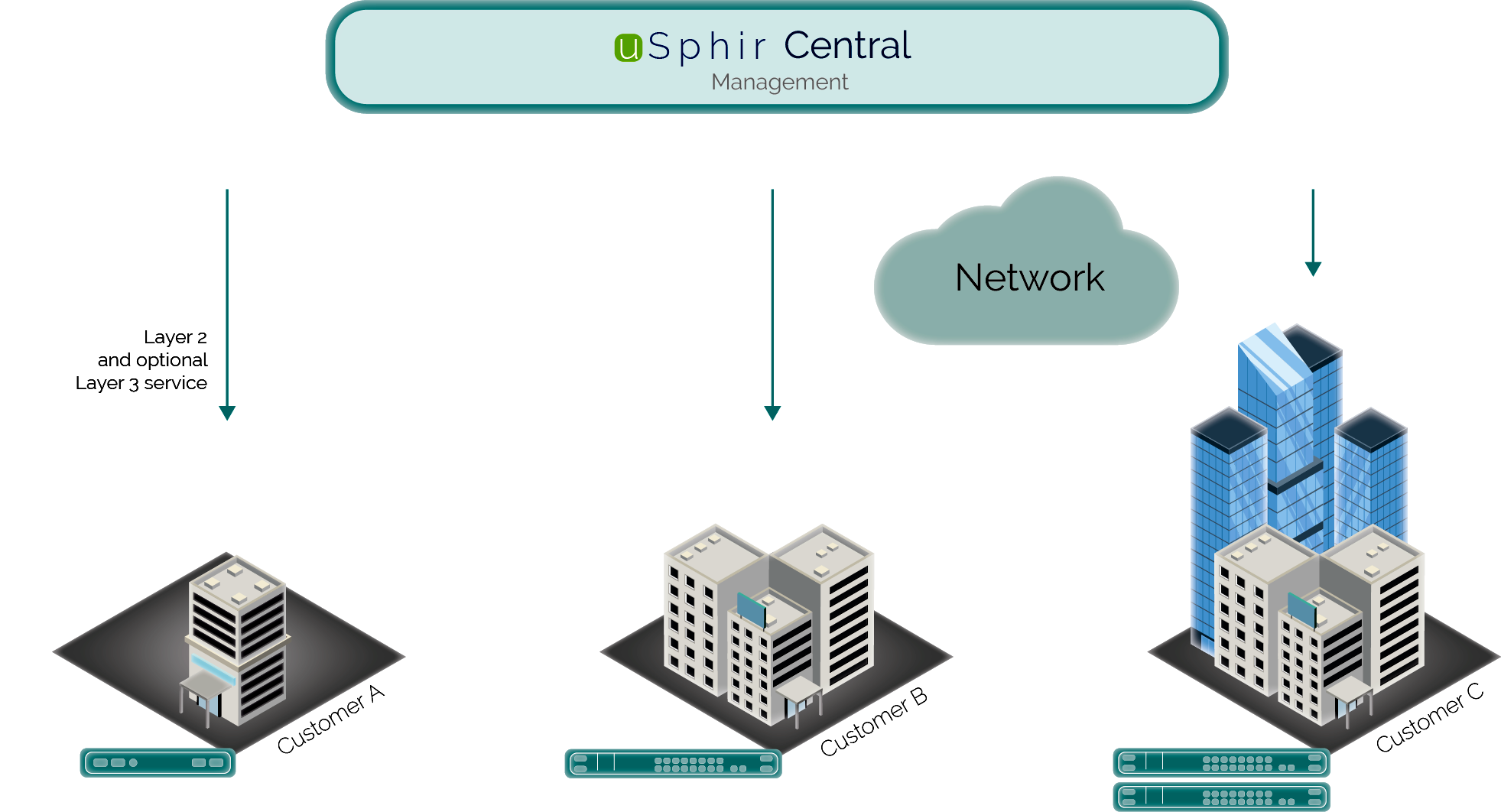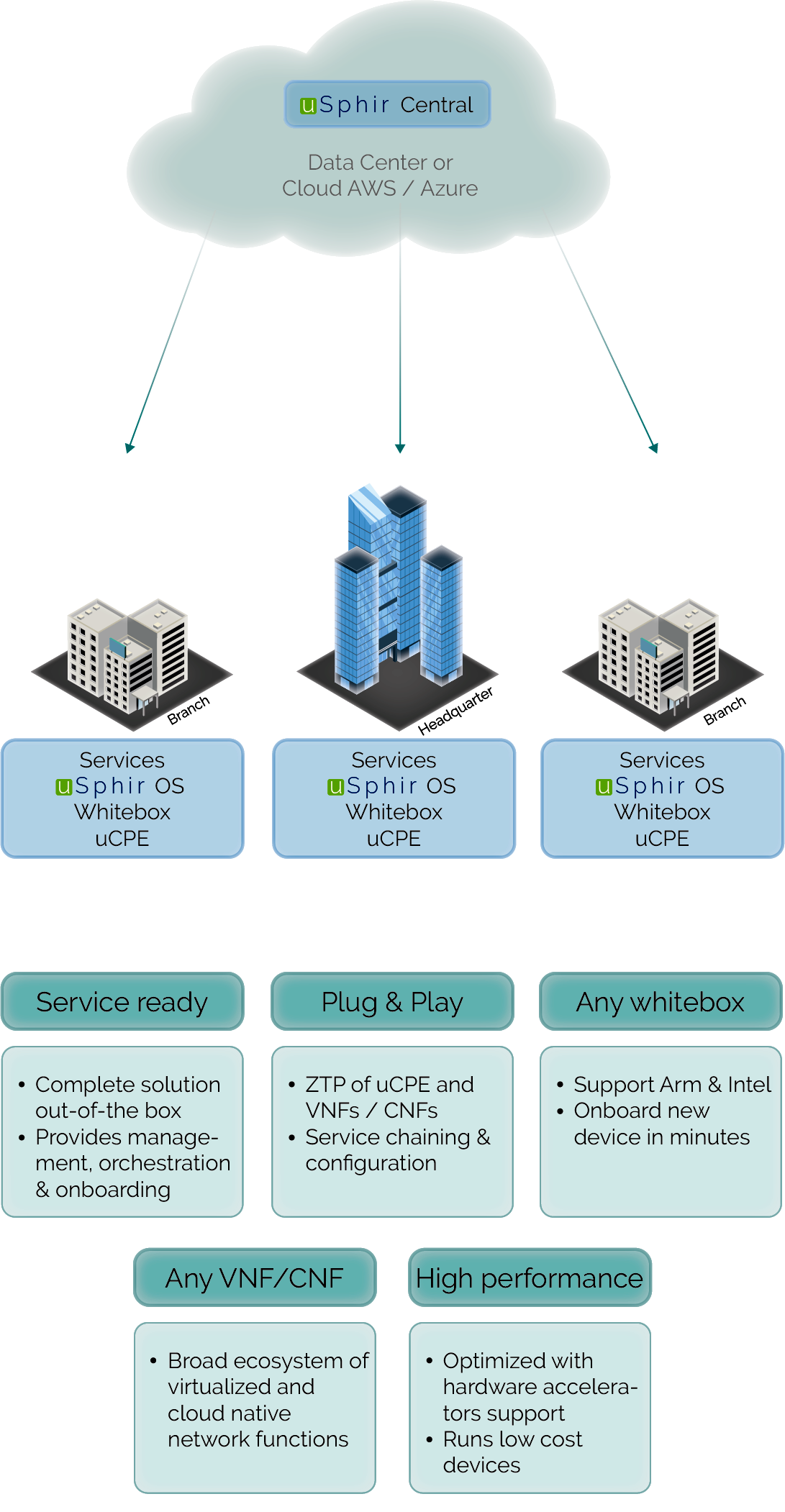In today‘s rapidly changing global telecommunications landscape, wholesale operators face a growing challenge: outdated network infrastructures, inadequate efficiency, security risks, and complexity in deploying new services not only impact their operational agility but also necessitate a strategic network transformation. This transformation is essential not only to keep pace with rapid technological advancements but also to address the specific challenges of the industry.
At the core of this development is the pressing need to integrate cloud integration and seamless automation into existing telecommunications networks. Outdated infrastructures, lack of scalability, and the integration of cloud services pose central problems that need to be overcome. Wholesale operators require not only more efficient and secure networks but also more flexible solutions to meet constantly changing market demands and varying customer needs.
In this context, uSphir by aconnic can serve as a transformative force for wholesale operators. As a specialist in Network-as-a-Service (NaaS) and advanced automation, uSphir is designed to address the concrete challenges faced by international network operators. These challenges include coping with outdated infrastructures, increasing efficiency, securing against potential threats, seamlessly integrating cloud services, and providing cost-effective network solutions. By integrating these elements, uSphir not only creates space for an efficient present but also an agile foundation for the future of the telecommunications industry.
Revolutionary Development Trends
Key Trends and Technologies in Wholesale Telecommunications Networks
Key Trends and Technologies in Wholesale Telecommunications Networks
The current landscape of the telecommunications industry is characterized by a strong focus on advanced connectivity, performance enhancement, and sustainable strategies. In light of these developments, it becomes crucial to examine in detail the impact of these trends on wholesale operators. Particularly, the challenge lies in understanding how technological changes influence the strategies and growth prospects of wholesale telecommunications networks. Key trends include 5G monetization, Edge Computing, and a growing emphasis on sustainability.
The constant changes in the telecommunications industry and the trends are leading to a growing demand for innovative solutions to meet the requirements. In this context, Network as a Service (NaaS), automation, and cloudification prove to be key components that not only respond to these challenges but also offer transformative solutions.
NaaS as a Response to Challenges
The increasing complexity of the telecommunications landscape requires flexible approaches to meet rising demands for speed, scalability, and security. In this context, Network as a Service (NaaS) is considered a response to the heightened demand for bundled services and diverse connectivity solutions. By abstracting the network infrastructure and enabling effortless scalability, NaaS allows wholesale operators to flexibly respond to dynamic market demands.
Automation: Key Role in the Telecommunications Industry
At the same time, automation is gaining immense importance in the telecommunications industry. The need for cost efficiency, agility, and innovation drives the role of automation technologies, especially in network management and configuration. Through automation, wholesale operators can not only enhance their efficiency but also meet the growing demand for advanced services by optimizing and accelerating manual processes.
Cloudification: Efficient Service Delivery
Simultaneously, cloudification is highlighted as another solution approach. The mention of Edge Computing for businesses underscores the growing significance of cloud technologies. The integration of cloudification with NaaS enables efficient service deployment, contributes to cost reduction, and promotes automation and innovation throughout the telecommunications industry.
Specialist in NaaS, Automation and Cloudification
Specialist in NaaS, Automation and Cloudification
With its focus on simplifying the complexity of global WAN management, uSphir proves to be an invaluable asset for international wholesale operators. Its scalable and cohesive platform streamlines cross-border network operations, thereby enhancing operational efficiency and global connectivity.
The comprehensive integration of NaaS, automation, and cloudification by uSphir not only provides wholesale operators with a competitive advantage but also ensures that their networks are efficient, secure, and flexible to meet the challenges of the future. This pioneering solution allows a shift in focus from operational concerns to innovative services and business models, facilitating a forward-looking positioning in the dynamic telecommunications industry.
Why NaaS Matters to Wholesale Operators:
- Operational Agility: NaaS empowers wholesale operators with the flexibility to rapidly deploy and scale network services, meeting the dynamic demands of the market and enhancing customer responsiveness.
- Simplified Infrastructure Management: By transitioning to NaaS, operators can streamline network infrastructure, reducing complexity and shifting focus from maintenance to innovation and service diversification.
- Advanced Security Integration: Inherent in the NaaS model is a strong emphasis on cybersecurity, crucial for safeguarding network integrity across varied customer engagements.
- Cloud Convergence: NaaS’s synergy with cloud services opens new avenues for business models and offerings, positioning wholesale operators as integral players in the evolving digital ecosystem.
Custom Services
Interoperability
5G Integration
Edge Computing
Automation
Cloudification
Security
Network as a Service
Costmanagement
Virtualization
uSphir
The different Components
The different Components
With its focus on simplifying the complexity of global network management, uSphir is an invaluable asset for international wholesale operators. Its scalable and cohesive platform streamlines cross-border network operations, enhancing operational efficiency and global connectivity.
uSphir Operating System (uSphir OS)
uSphir OS is a powerful, space-efficient network operating system designed for x86 architecture. It efficiently transforms standard hardware into a carrier-class Edge Computing device suitable for operating small cloud data centers. This system emphasizes increasing efficiency and providing robust, agile operational capabilities.
uSphir Router
The uSphir Router is a connectivity solution that reduces the need for additional network and edge devices. It offers cost-effective routing functions, lower overall operating costs, and seamless connectivity. This router is ideal for connecting various network locations and supports Edge Computing requirements.
uSphir Central
uSphir Central is a network manager and orchestrator designed for user-friendliness and high efficiency. It automates and streamlines Edge Computing operations, enables faster deployment of new services, and supports ongoing innovations in network management.

Key Features of uSphir
Centralized Global Network Control: Streamlines management across international network services.
Dynamic Scalability and Flexibility: Ensures responsive and adaptable service deployment in line with market and customer needs.
Robust Network Security: Incorporates cutting-edge security protocols, ensuring the integrity and safety of network operations.
Prepared for Future Technological Shifts: uSphir is engineered to seamlessly adapt to emerging technological trends, keeping networks at the forefront of the telecom evolution.
uSphir Alignment with Industry Trends
With its focus on NaaS and automation, uSphir is well-positioned to benefit from these trends. Its capabilities support bundled service offerings, enhance Edge Computing applications, and contribute to sustainable network solutions. By providing scalable and flexible solutions, uSphir enables wholesale operators to adapt to this evolving market dynamics, ensuring future readiness in a rapidly changing industry.

uSphir Technical Capabilities: Redefining Network Functionality

uSphir distinguishes itself through its technical capabilities, enabling a redefinition of network efficiency. This overview delves into the core functionalities, architectural innovations, integration with existing networks, technological differentiators, and the competitive edge of uSphir. From advanced virtualization and dynamic service orchestration to innovative approaches like disaggregation and a customer-centric orientation, uSphir positions itself as a trailblazer for agile, adaptable, and secure network solutions compared to traditional systems:
Core Functionalities:
- Advanced Virtualization: Utilizes cutting-edge network function virtualization (NFV) to streamline service delivery and management.
- Dynamic Service Orchestration: Features robust service orchestration capabilities, enabling efficient deployment and scaling of network services.
- Enhanced Security Measures: Integrates top-tier cybersecurity protocols, ensuring secure network operations.
Architectural Innovations:
- Modular Design: uSphir’s architecture is modular, facilitating seamless integration with a variety of network infrastructures and existing systems.
- Scalable Infrastructure: Designed for scalability, adapting to growing network demands without extensive infrastructural changes.
Integration with Existing Networks:
- Flexible Compatibility: uSphir is compatible with existing network infrastructures, allowing for smooth integration and coexistence with legacy systems.
- Seamless Cloud Integration: Supports cloud-native functions, enhancing cloud connectivity and services within existing networks.
Technological Differentiators:
- Disaggregation and Openness: Stands out for its open, disaggregated approach, unlike traditional, closed systems, offering greater flexibility and customization.
- Future-Proof Solutions: Continuously evolves with emerging technologies, ensuring long-term relevance and adaptability
Competitive Edge:
- Innovative Versus Traditional: Sets a new industry standard by offering more agile, adaptable, and secure solutions compared to traditional network management systems.
- Customer-Centric Approach: Tailors services to meet specific customer needs, enhancing satisfaction and driving operational efficiency.

